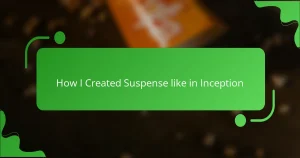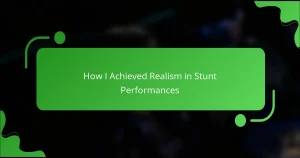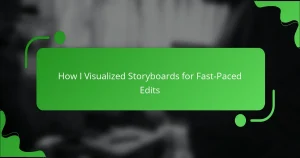Key takeaways
- Action short films effectively convey intense emotions and storytelling in under 10 minutes, enhancing audience engagement.
- Lighting techniques, especially chiaroscuro, create mood and emotional depth; contrasting light and shadows define character struggles.
- “Gladiator” exemplifies the use of lighting to evoke nostalgia and urgency, with specific techniques elevating battle scenes and character development.
- Incorporating natural light, strong contrasts, and colored gels can significantly enhance the visual storytelling of short films.
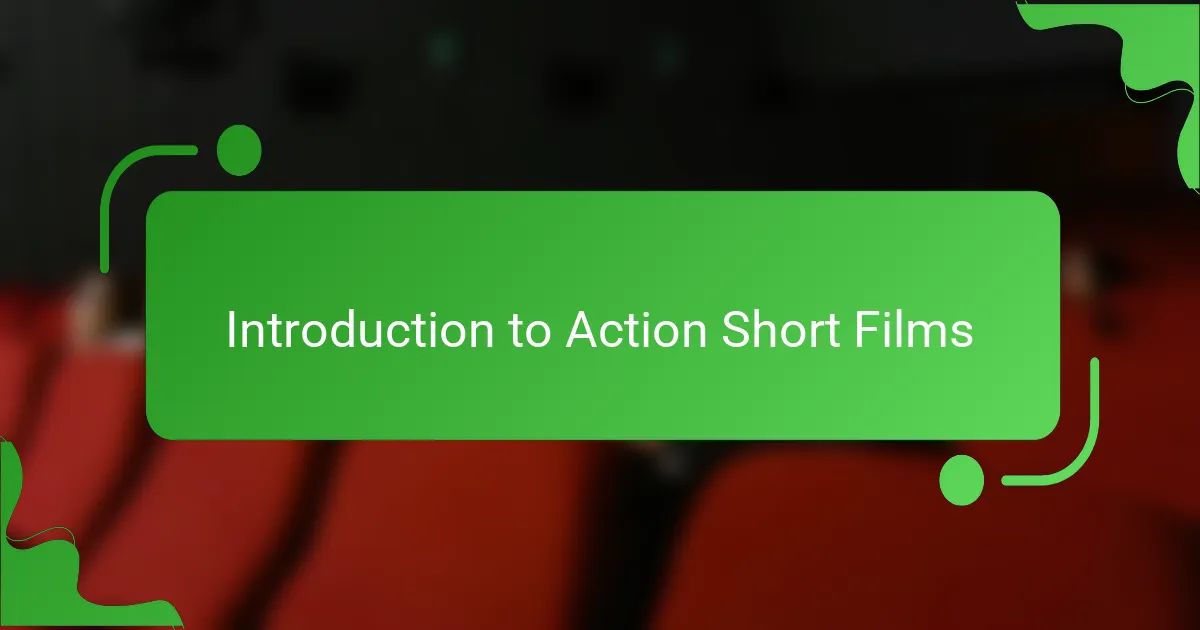
Introduction to Action Short Films
When it comes to action short films, they serve as powerful narratives packed into bite-sized experiences. I’ve always felt that these films can convey intense emotions and dynamic storytelling in a fraction of the time, allowing for a quick but memorable thrill. The storytelling techniques used, like dramatic lighting from classics such as “Gladiator,” can elevate the action and draw viewers in, making them feel every punch and every moment of suspense.
Creating a gripping atmosphere often relies on clever lighting techniques. I remember the first time I saw “Gladiator” and how the lighting enhanced the epic battles. It wasn’t just about the actions; it was how the light and shadows danced on the faces of the characters that grabbed my attention and made the scenes more impactful. This kind of attention to detail can transform an ordinary action short into something truly extraordinary.
| Aspect | Action Short Films |
|---|---|
| Length | Typically under 10 minutes |
| Narrative Style | Concise, focused, and impactful |
| Use of Lighting | Essential for mood and emotion |
| Audience Engagement | Quick thrill and memorable impact |
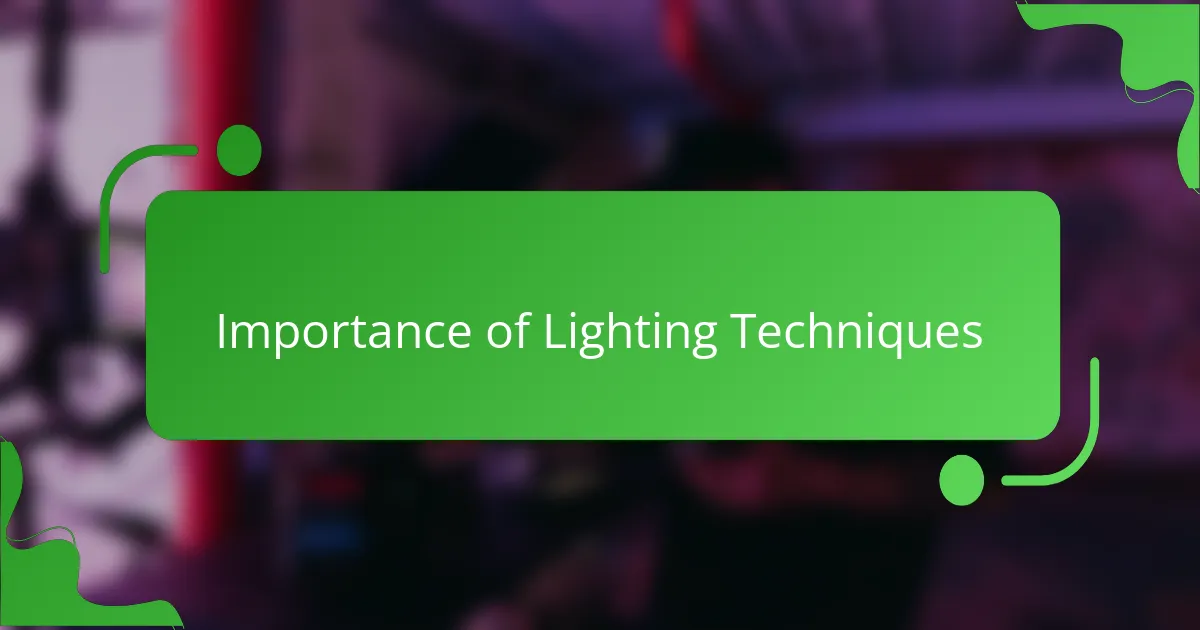
Importance of Lighting Techniques
Lighting techniques play a crucial role in shaping the mood and tone of a film. In “Gladiator,” the contrast between harsh light and deep shadows not only highlights the intensity of the battles but also reflects the emotional struggles of the characters. When I watch scenes with such thoughtful lighting, I can’t help but feel a more profound connection to the storyline.
The use of lighting can evoke strong emotions, guiding the audience’s reactions without a single word spoken. I remember when a dimly lit scene revealed a character’s internal conflicts; it made me ponder how lighting can serve as a visual storytelling device. Have you ever noticed how certain hues in lighting can make you feel tense or at ease? It’s fascinating how a simple shift in brightness can manipulate our emotions so effectively.
Moreover, in action short films, where every second counts, effective lighting can enhance or even define the pacing of the narrative. I think back to the way “Gladiator” utilized golden hour lighting to depict triumph and glory contrasted with darker scenes that conveyed despair. This juxtaposition sets the tone beautifully, and in short films, achieving such a dramatic effect in a limited time frame can leave a lasting impression on viewers.
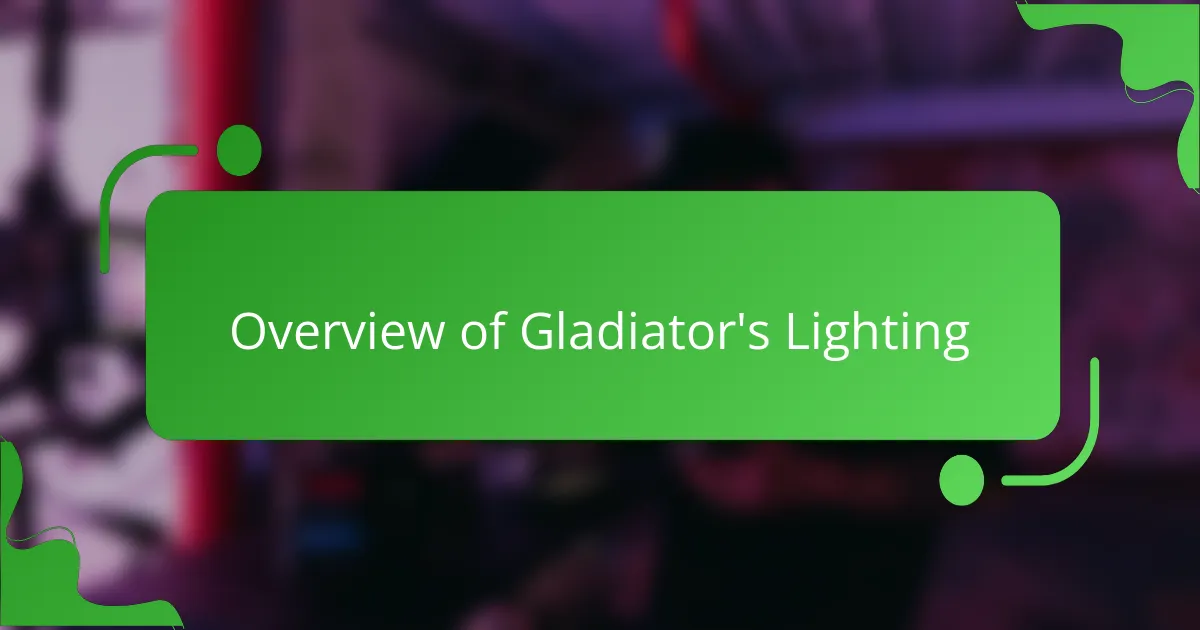
Overview of Gladiator’s Lighting
One of the standout elements of “Gladiator” is its distinctive lighting techniques, which play a crucial role in establishing the film’s tone and atmosphere. The interplay of natural light and the use of shadows creates a gritty realism that immerses the viewer in the brutal world of ancient Rome. I remember the first time I watched the film; the dramatic lighting during the combat scenes heightened my emotions, making every battle feel visceral and impactful.
Moreover, the way certain scenes are bathed in warm or cold light effectively underscores the emotional weight of the moment. For instance, the golden hues during the peaceful flashbacks contrast sharply with the darker, harsher lighting in the Colosseum. This not only enhances the storytelling but also evokes a strong sense of nostalgia and loss, drawing the viewer deeper into the protagonist’s journey.
Here’s a comparison table that encapsulates some of these lighting techniques:
| Technique | Effect |
|---|---|
| Natural Light | Enhances realism and immersion |
| High Contrast Lighting | Creates tension and drama |
| Color Temperature Variations | Evokes emotions and highlights themes |
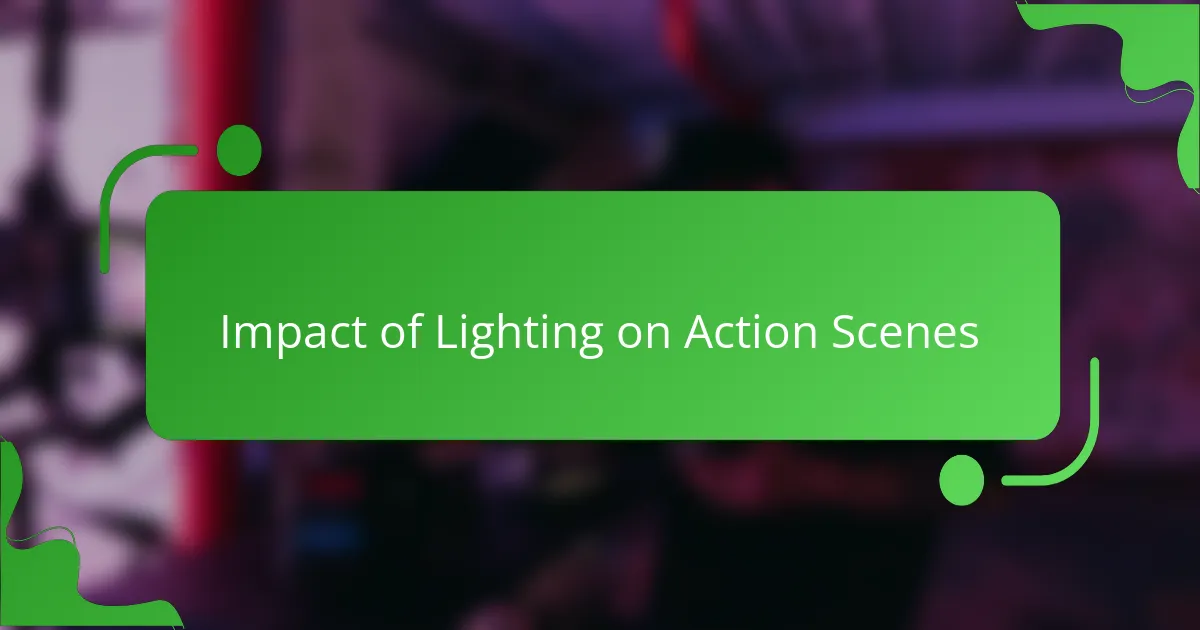
Impact of Lighting on Action Scenes
Lighting plays a crucial role in action scenes, particularly in a film as visually striking as “Gladiator.” I find that the interplay of shadows and highlights amplifies the tension during battle sequences. For instance, the warm tones during scenes of camaraderie contrast starkly with the cold, harsh lighting of combat, creating an emotional depth that pulls the viewer in.
I’ve always noticed how specific lighting techniques can evoke certain feelings. When characters are illuminated in dramatic light, it makes the stakes feel higher, the emotions rawer. The way Ridley Scott used light and shadow not only showcases the physical prowess of the gladiators but also enhances their emotional struggles, making each fight not just a spectacle but a deeply personal journey.
Here’s a simple comparison of lighting techniques often found in action films versus those seen in “Gladiator”:
| Lighting Technique | Typical Action Films | Gladiator |
|---|---|---|
| High Contrast | Often used for dramatic moments | Utilized to depict character conflicts |
| Warm Tones | Used in moments of triumph | Creates nostalgia and emotional connection |
| Soft Lighting | Common in romantic subplots | Highlights vulnerability of characters in battle |
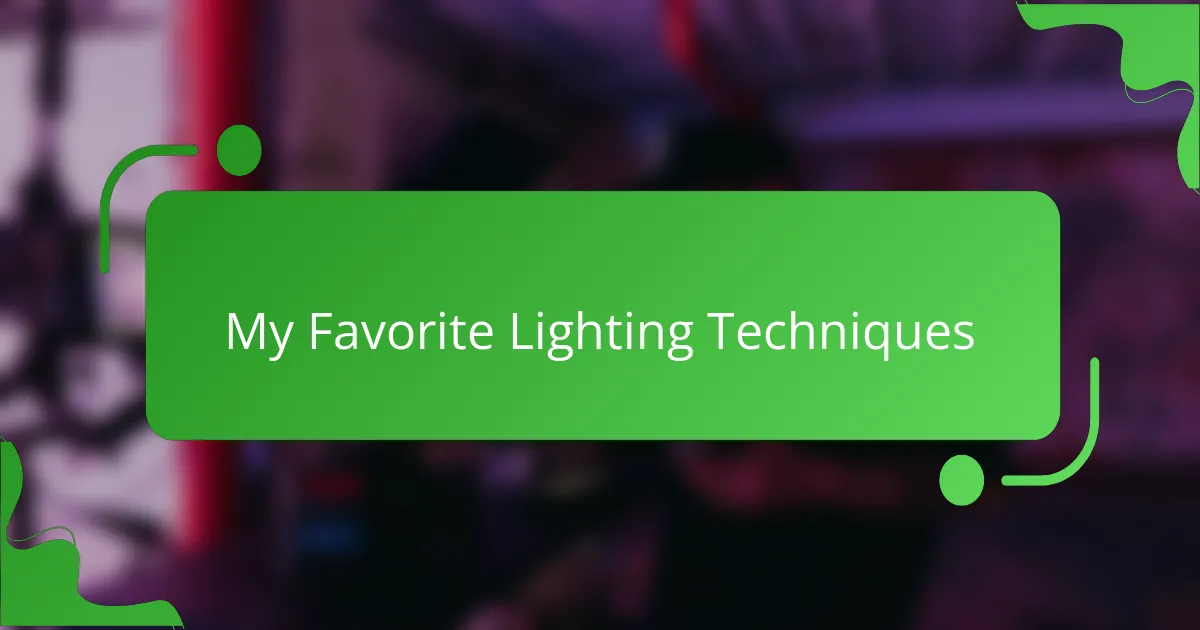
My Favorite Lighting Techniques
When I think about lighting techniques in “Gladiator,” I can’t help but admire how they enhance the emotional weight of each scene. The use of chiaroscuro, which is essentially the interplay of light and shadow, creates a dramatic effect that pulls viewers into the struggle of the characters. Personally, I’ve always found that soft, diffused lighting can create an intimate atmosphere, similar to what we see in the quieter moments of the film, making me feel more connected to the characters’ inner turmoil.
Then there’s the contrasting harsh lighting, especially in the battle scenes. It heightens tension and adds a sense of urgency, something I often try to replicate in my own action short films. By using shadows effectively, I find that even simple actions can feel monumental and impactful, just like in those epic scenes of “Gladiator.”
Here’s a comparison table highlighting some of the key lighting techniques used in “Gladiator”:
| Lighting Technique | Effect on Audience |
|---|---|
| Chiaroscuro | Creates depth and highlights inner conflict |
| Soft Diffused Lighting | Establishes intimacy and emotional connection |
| Harsh Lighting | Increases tension and urgency in action scenes |
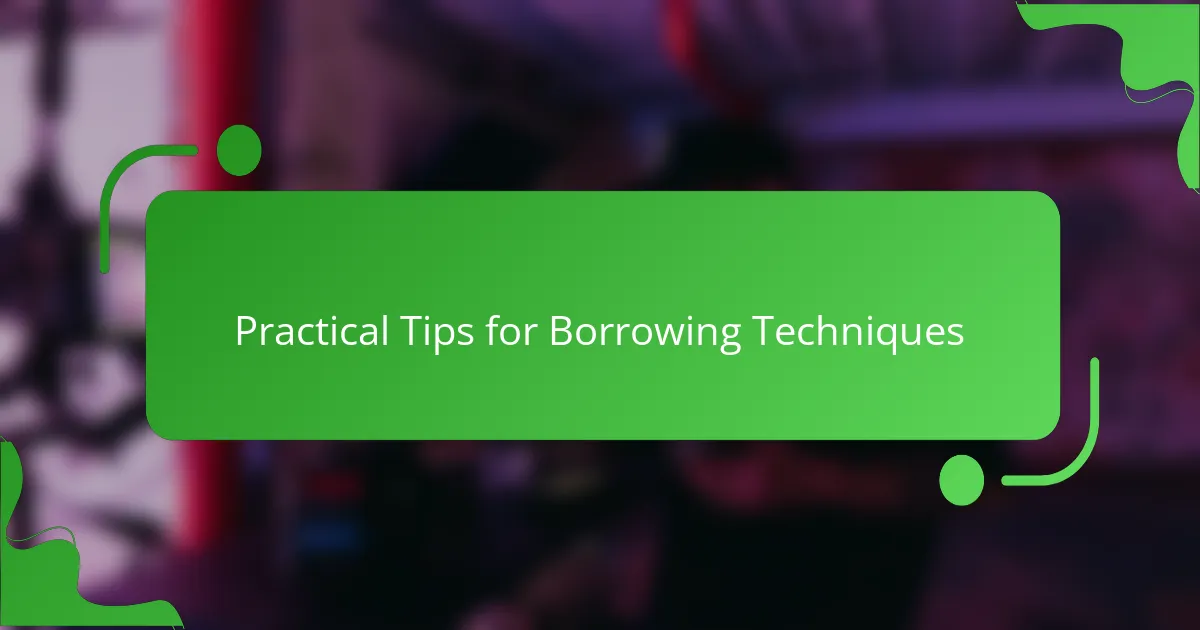
Practical Tips for Borrowing Techniques
When borrowing lighting techniques from “Gladiator,” I think it’s essential to focus on the emotional impact of light. The film masterfully uses chiaroscuro—an interplay of light and shadow—to evoke feelings of tension and drama. I recommend experimenting with strong contrasts in your own short film, which can add depth and intrigue to your scenes.
Another technique I find effective is using natural sources of light, just as “Gladiator” often does with sunsets and campfires. This not only beautifies the scene but can also enhance the authenticity of the story. I’ve found that shooting during the golden hour creates a magical quality that resonates well with viewers.
Lastly, consider utilizing colored gels to mimic the warm, dusty tones seen in the film. When I tried this on a project, it transformed the mood dramatically. It’s these little touches that can elevate your short film from good to memorable.
| Technique | Description |
|---|---|
| Chiaroscuro | Use strong contrasts between light and shadow to create depth and emotional tension. |
| Natural Light | Incorporate natural sources like sunsets to enhance authenticity and beauty. |
| Colored Gels | Utilize gels to replicate warm hues, giving your scenes a distinct mood. |

Conclusion and Personal Insights
Reflecting on the lighting techniques showcased in “Gladiator,” it’s clear how they profoundly enhance the storytelling. When I think about those battle scenes illuminated by stark contrasts, I remember feeling my heart race, realizing just how light can shape our perceptions of urgency and danger. Don’t you find it incredible how a simple shift in lighting can transform an audience’s emotional response?
I’ve also realized that the emotional weight carried by certain lighting choices resonates beyond just visuals. For instance, the warmer tones during quieter moments evoke nostalgia for the characters’ past, drawing me in and making me ponder their journeys. Watching such scenes reminds me of how powerful visual storytelling can be, creating connections that linger long after the film ends.
Ultimately, embracing these lighting techniques in my own projects has been a rewarding challenge. I’ve begun to appreciate how essential it is to think beyond just illumination and truly consider the story I want to tell. Harnessing the emotional power of light can elevate even the simplest action short films, allowing me to create moments that resonate deeply with my audience.
